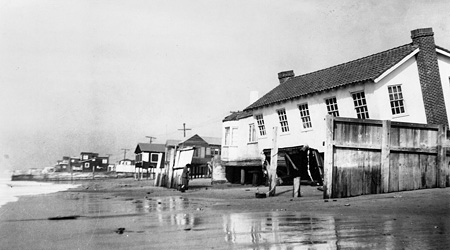What Does Flood Insurance Cover?

Flood insurance covers damage to the home or property specifically related to flooding resulting from rising riverbanks or tidal areas along the coast. This is a special type of insurance specifically for properties prone to flood related damage and is in addition to standard homeowners insurance. It is fairly expensive which is why many times individuals in flood zones or floodplains do not often have flood insurance. Insurance company policies are very specific about the type of damage resulting from flooding and if the homeowner does not have flood insurance they will often unlikely receive compensation to make repairs on the property.
A recent example of why it is important to have flood insurance is the damage that resulted from the storm surge when Hurricane Katrina hit New Orleans and the Gulf Coast in 2005. Thousands of families were affected by a combination of various damages caused by this natural disaster which included wind damage, rain damage as well as flood damage. The semantics which describe each types of damage as it pertains to insurance coverage is important. Wind damage is fairly self-explanatory which results in roofs being torn from structures and debris acting as projectiles breaking windows and damaging siding. Rain and water damage specifically relates to excessive amounts of precipitation which can penetrate roofs and damaged windows and therefore ruining carpet and personal property within the structure. Flooding damage however is very specific to rising water levels in flood zones which creates a very distinct high water mark and will often leave residual sediment and other natural deposits at ground level.
Why this distinction is important is because in the Gulf Coast there was heated debate between wind causing a tidal surge resulting in flooding and flooding damage resulting from rising water levels. Homeowners who did not have flood insurance argued the wind caused the damage by pushing storm surges on to land. Insurance companies however countered that the high water marks and standing water clearly denoted coastal flooding and would only be paid out to homeowners having flood insurance. Many homeowners did not receive insurance payouts due to this distinction and therefore because of a lack in flood insurance coverage were unable to rebuild their homes.
The United States federal government publishes detailed maps delineating flood zones and floodplains. It is important for homeowners to understand where their property is located in relation to bodies of water and determine whether or not they should purchase flood insurance even though the cost can be prohibitive. Not purchasing flood insurance coverage can result in a total loss of property and a failure to rebuild even if they have homeowners insurance. If you are unsure about the status of your location speak with your insurance agent and a government representative to determine the best course of action and to decide whether or not you should purchase flood insurance in addition to your standard homeowners insurance coverage.







